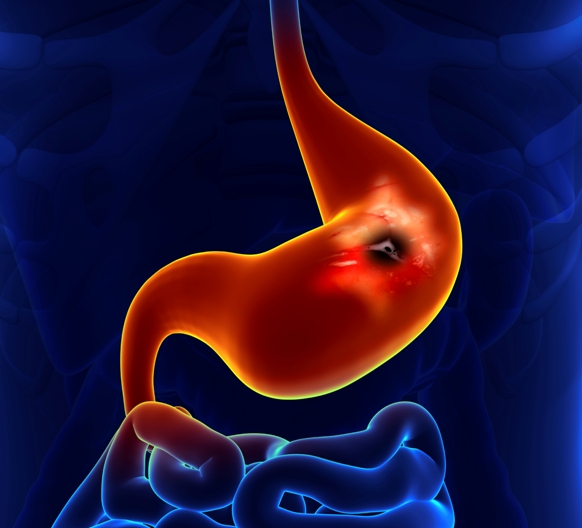Overcoming Glioblastoma: Breakthrough Insights for Beating the Deadliest Brain Cancer
Glioblastoma multiforme, or GBM, is widely regarded as the number one challenge in neuro-oncology, the field of cancer medicine concerned with malignancies of the nervous system. This highly aggressive form of brain cancer has been increasing in incidence among the elderly. Nearly half of all cases occur in people over age 65, and survival diminishes with increasing age. The average survival time is only about one year. In terms of treatment, GBM presents a monumental challenge because the disease tends to spread and infiltrate the normal brain, making it difficult to accomplish a complete resection or total surgical removal of the tumor.
According to neurosurgeon John Wolbers of Erasmus University Medical Centre in Rotterdam, The Netherlands, this complete resection is the most critical treatment-related predictor of survival for GBM patients. A near 80% resection can prolong survival for these patients, he adds, but even this goal can be hard to attain.
Writing in the January 2014 Chinese Journal of Cancer, Dr. Wolbers notes that one in every three GBM patients is ineligible for surgery primarily due to a patient’s older age and extent of the cancer. Even when surgery is an option, he says, “the ideal supra-maximum (tumor plus margin) surgical resection is unable to eliminate all tumor tissue and, unlike other solid tumors, ‘clear margins’ cannot be achieved in surgery for GBM.”
The priority is to find ways to distinguish the cancer from the normal brain during surgery—in essence, separating the wheat from the chaff. To this end, Wolbers notes that magnetic resonance imaging (MRI) has helped bolster the prospects for complete resection and has already improved survival rates for glioblastoma patients. Unfortunately, he adds, the expense of performing MRIs during surgery is extremely high. Wolbers advocates the use of fluorescence to guide tumor visualization and surgery—that is, using a light-sensitizing agent that accumulates more or less selectively in brain tumors.
By applying light to the tumor, the neurosurgeon can more easily detect and remove the disease. Wolbers cites research showing that this light-based strategy may be superior to MRI-guided neurosurgery. The overall approach entails a blending of photodiagnosis, photodynamic therapy (PDT), and neurosurgery. Also known as fluorescence-guided surgery or FGS, Wolbers contends this innovative strategy “has the potential to revolutionize neurosurgery by providing high sensitivity and real-time imaging guidance to surgeons to define glioma margins.”
Most studies of PDT/FGS for brain cancer have used the natural substance called 5-aminolevulinic acid. The substance is taken orally a few hours before surgery, resulting in the accumulation of the light-sensitizing agent, protoporphyrin IX, within glioma cells. In his 2014 review, Wolbers describes various strategies for PDT.
“Before closing [the surgical site’, illumination of the resection cavity with the appropriate light is a straightforward option,” he writes. “The debate about improved efficacy by light fractionation is ongoing. So-called metronomic PDT involves prolonging the (low-dose) illumination by one or more light distributors in the tumor cavity and guiding them subcutaneously for intermittent PDT in the immediate postoperative days.” He goes on to describe the use of an implantable telemetric light delivery and monitoring system for metronomic PDT, adding that the photosensitizer may need to be provided repeatedly during such a prolonged treatment.
Along these more technical lines, French researchers recently proposed that PDT may “…fill the need for a targeted [GBM] treatment that may reduce recurrence and extend survival with minimal side effects.” Their review summarizes the various PDT technologies that can guide and enhance neurosurgery, along with new light delivery devices, photosensitizer delivery systems, and dosing considerations for both the photosensitizer and light, as reported in the March 2014 issue of Cancer Treatment Reviews.
Finally, the issue of cost continues to garner serious attention from hospital administrators and policymakers alike. Researchers in Barcelona (Spain) recently determined the cost-effectiveness ratios for PDT/FGS versus conventional neurosurgery in terms of the incremental cost per complete resection, as well as the cost per additional quality-adjusted life year, or QALY. (Note: The QALY is a disease burden assessment tool, an integrative measure of both the quality and quantity of life lived. This tool is used in determining the monetary value of a medical treatment.)
Utilizing data collected in the VISIONA observational study, the Barcelona researchers found that the added cost posed by PDT/FGS only amounts to 4550 Euros per additional complete resection achieved, and 9021 Euros per QALY gained. Their conclusion, as reported in the 24 January 2014 issue of Neurologia, was that PDT/FGS for malignant brain tumors “entails a moderate increase in hospital costs compared to current surgical practice and can be considered a cost-effective innovation.”
Support us by buying our book, The Medicine of Light, and ebooks from our Photoimmune Discoveries eBook Series.
Sources
Bechet D, Mordon SR, Guillemin F, Barberi-Heyob MA. Photodynamic therapy of malignant brain tumours: A complementary approach to conventional therapies. Cancer Treat Rev. 2014 Mar;40(2):229-41
Slof J1, Díez Valle R2, Galván J3. Cost-effectiveness of 5-aminolevulinic acid-induced fluorescence in malignant glioma surgery. Neurologia. 2014 Jan 24. [Article in English, Spanish; Epub ahead of print]



 English
English Français
Français Deutsch
Deutsch Nederlands
Nederlands